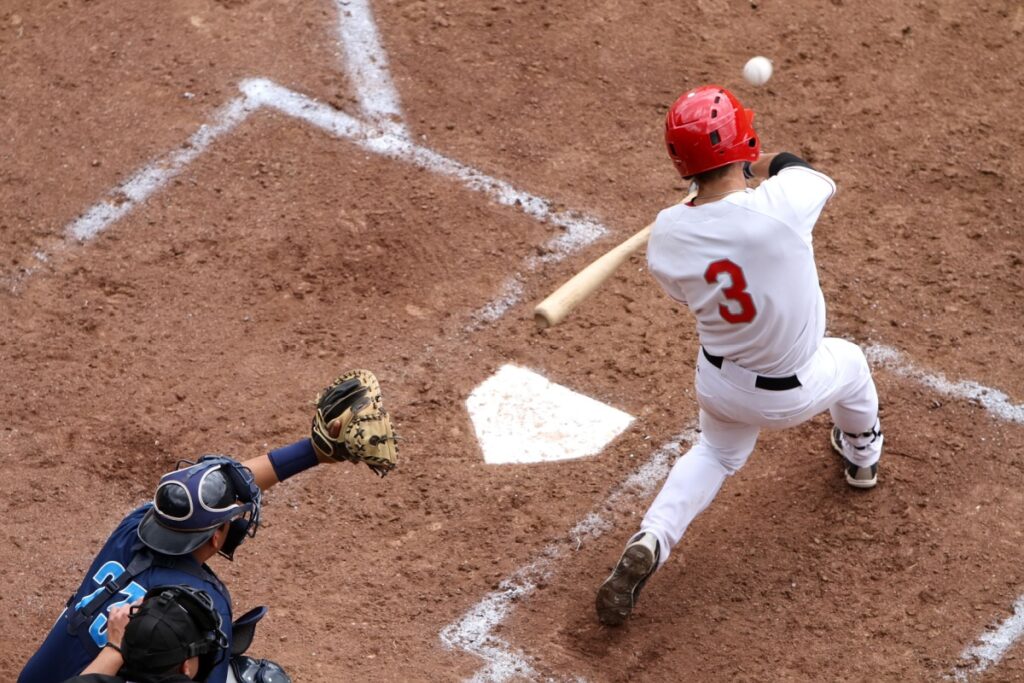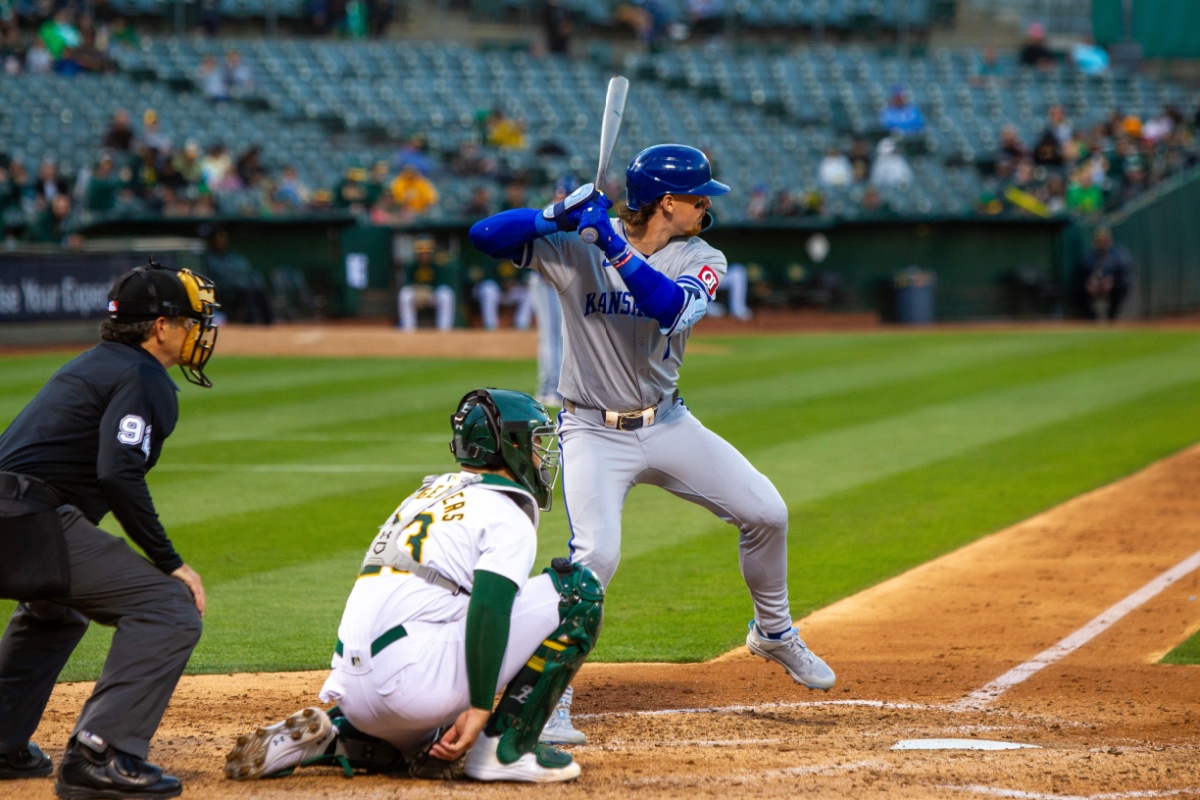Whether you’re new to the diamond or just curious about how it all works, this guide will help you understand the basics of baseball!
While Australians have a strong affinity for sports like cricket and AFL, baseball is steadily gaining popularity Down Under, with leagues like the Australian Baseball League gaining traction in recent years. Long considered America’s favourite past time, baseball is a game rich with history, strategy, and excitement that anyone can get into. With some guidance, you’ll be able to appreciate and enjoy the sport just as much as any seasoned fan.
By understanding these basics, you’ll be well on your way to enjoying and appreciating the game. So grab a glove, a ball, and maybe even a meat pie, and immerse yourself in the wonderful world of baseball!
Team Formation
First, let’s discuss the teams. Baseball is played between two teams, each consisting of nine players on the field at any one time.
Here are the primary positions and their roles:
- Pitcher: The player who throws the ball to the batter, aiming to get them out.
- Catcher: Positioned behind home plate, the catcher receives pitches and is involved in defensive plays.
- First Baseman: Covers first base and is involved in fielding ground balls and receiving throws from other players.
- Second Baseman: Covers second base and fields ground balls hit to the right side of the infield.
- Shortstop: Positioned between second and third base, the shortstop fields ground balls and covers second base.
- Third Baseman: Covers third base and fields ground balls hit to the left side of the infield.
- Outfielders: There are three outfielders – left fielder, centre fielder, and right fielder – who cover the outfield and catch fly balls.
Equipment Needed to Play Baseball
To get started with baseball, you’ll need:
- A baseball
- A bat
- A glove for fielding
- Baseball cleats
- A baseball diamond (field with bases)
Winning the Game
The objective of baseball is to score runs by hitting the ball and running around a series of four bases, placed in a diamond shape, before coming back and reaching the home plate at the start. The team with the most runs at the end of the game wins. A standard game consists of nine innings, with each team getting a turn to bat and field in each inning.

Baseball swing on home plate. Photography by Paul Yates. Image via Shutterstock
Scoring in Baseball
The basic scoring in baseball is measured in ‘runs’. There are a couple of ways that a player can score a run:
- Hitting: Players hit the ball from the home plate and run to as many bases as possible. A player can stop at any of the other three bases on the field if they don’t think they can make it any further before they get out. Once the next batter hits the ball, they are allowed to run again.
- Run: A run is scored when a player successfully touches all four bases in order and reaches home plate.
- Home Run: A hit that allows the batter to round all the bases and score a run. Any teammates already on a base also run to the home plate and score a run.
- Baserunning: Players run from base to base, aiming to reach home plate and score a run. Players can also try to ‘sneak bases’, running to the next base before the next batter, if they are confident they can reach the next base without getting out.
Basic Rules and Gameplay
At the start of the game, the visiting team bats first, and the home team takes the field. Here are some basic rules to be aware of:
- Pitching: The pitcher’s goal is to get the batter out by throwing strikes. A strike occurs when the batter swings and misses or doesn’t swing at a pitch within the strike zone. If the batter accumulates three strikes, they are out.
- Batting: The batter starts at home plate and tries to hit the ball pitched by the opposing team’s pitcher. If they hit the ball, they will try and get to run to each base in the diamond, trying to return back to home plate.
- Fielding: The fielding team spreads out across the play field with the goal of getting the batters out. This mean returning the ball back to either the pitcher or one of the team members on the base. The fielders can get the batter and runners out by catching the ball in the air, tagging the opposing team when they reach a base tries to get the batter or runners out by catching the ball, tagging bases, or tagging runners.
- Outs: An out is when a batter is either caught while trying to run between bases, or gets three strikes when batting. An out player is removed from the field and goes back on the bench.

Baseball pitchers. Photography by Juice Flair. Image via Shutterstock
How Long Is a Baseball Game?
A typical baseball game lasts for nine innings, with each inning divided into two halves: the top and the bottom. In the top half, the away team bats while the home team plays defence. In the bottom half, the roles reverse. After three outs, the teams switch roles. The game continues for nine innings, and the team with the most runs at the end wins. If the score is tied at the end of nine innings, extra innings are played until one team wins.
Personal Fouls and Violations
While baseball doesn’t have “personal fouls” in the same way as basketball, there are rules players need to follow:
- Strikes: A batter can get a strike if they swing and miss, or if they don’t swing at a good pitch.
- Balls: If the pitcher throws four balls (bad pitches), the batter gets a walk to first base.
- Tagging Up: Runners must touch their current base before advancing to the next base after a fly ball is caught.
So, there you have it. These are basics for starting to understand baseball, and the rules and strategies that make this such an exciting sport. Yet for those that want to go a little deeper, or are still trying to understand the difference between a batter and a pitcher, then watch this video
Delve deeper into the world of sport with our list of the 10 Best Sport Autobiography Books You Must Read. Or, test your knowledge with our quiz to see if you can Name Each of these 10 International Sport Stadiums.


